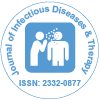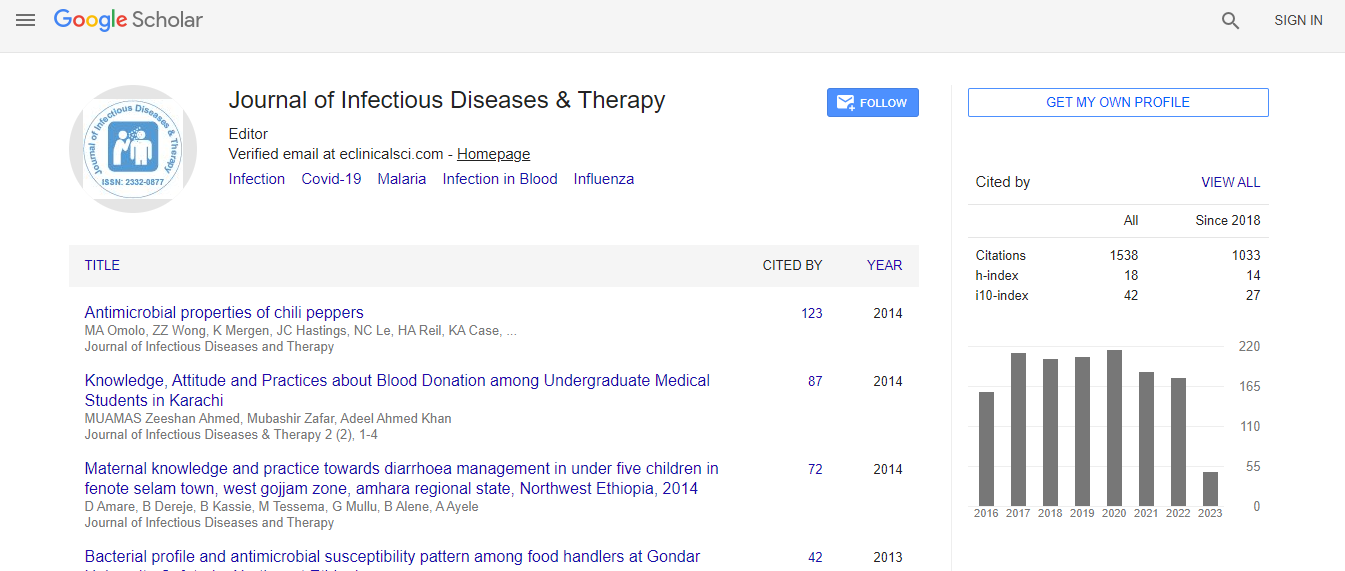Our Group organises 3000+ Global Events every year across USA, Europe & Asia with support from 1000 more scientific Societies and Publishes 700+ 91�Թ� Journals which contains over 50000 eminent personalities, reputed scientists as editorial board members.
91�Թ� Journals gaining more Readers and Citations
700 Journals and 15,000,000 Readers Each Journal is getting 25,000+ Readers
Citations : 1529
Indexed In
- Index Copernicus
- Google Scholar
- Open J Gate
- RefSeek
- Hamdard University
- EBSCO A-Z
- OCLC- WorldCat
- Publons
- Euro Pub
- ICMJE
Useful Links
Recommended Journals
Related Subjects
Share This Page
Prevalence of Aerobic Gram-Negative Bacilli in Lower Respiratory Tract Infections in Menoufia Governorate, Egypt
6th Euro-Global Conference on Infectious Diseases
Rabab A. Elwahsh, Shymaa A. El Askary, Amal F. Makled, Gehan A. Abdel Aal and Reda A. Ibrahem
Menoufia University, Egypt
Posters & Accepted Abstracts: J Infect Dis Ther
DOI:
Abstract
Background: Lower Respiratory Tract Infections (LRTIs) are among the most common infectious diseases affecting humans worldwide and are considered as an important cause of morbidity and mortality for all age groups. Almost three quarters of all antibiotic consumptions are for respiratory tract infections. Methods: Two hundred and twenty two gram negative bacteria (GNB) were isolated from 763 LRTIs specimens in the period from February 2015 to January 2016 by conventional microbiological methods. Multidrug-resistance (MDR), extensively drug-resistance (XDR) and pan drug resistance (PDR) for GNB were examined by disc diffusion method. ES�?²L and M�?²L GNB suspected strains were studied by screening and confirmatory tests. Results: The prevalence of culture positive specimens was (65.9%) of the studied specimens, 44.1% of them were aerobic GNB which was distributed as 35.8% of the ward isolates and 60.7% of ICUs isolates. Klebsiella spp. (44.6%) was the most common GNB isolated from LRTIs patients followed by E coli (20.3%), Pseudomonas spp. (18%), Acinetobacter spp. (10.8%), Enterobacter (4.5%) and Citrobacter (1.8%). Total MDR, XDR and PDR GNB were 45.5%, 47.8% and 5.0% respectively. There was statistically significant difference between the studied fermentative GNB and non-fermentative GNB (60.1% Vs. 42%) for ES�?²L production by Cephalosporin/clavulanate combination disks test (confirmatory test). The highest percentage of M�?²L production by confirmatory IPM/EDTA was for Acinetobacter spp. (62.5%) followed by Pseudomonas spp. (60%), Klebsiella spp. (52.5%) and E coli (40%). The mortality rate was 7.4% and 10.9% in patients who had ES�?²L or M�?²L producing isolates respectively. Conclusions: Multidrug-resistant (MDR) gram-negative bacilli (GNB) are now widespread especially in patients with LRTIs and present a major challenge to modern medical practice. Longer hospital stay, ICU admission, invasive procedures, associated comorbid conditions and empirical antibiotic usage were significantly high risk factors for acquisition of ES�?²L and M�?²L.Biography
Rabab El wahsh and her coworkers has conducted this study to determine the prevalence of aerobic gram negative bacteria among LRTIs patients and associated risk factors in addition to its effect on patient outcome with declaration of MDR aerobic Gram-negative bacilli (GNB) causing LRTIs, with a special reference to extended-spectrum beta-lactamase(ESβL) and metallo-beta-lactamase (MβL) producing bacterial strains and to study their relation with patient’s mortality and morbidity. They found Multidrug-resistant (MDR) gram-negative bacilli (GNB) are now widespread especially in patients with LRTIs and present a major challenge to modern medical practice.

